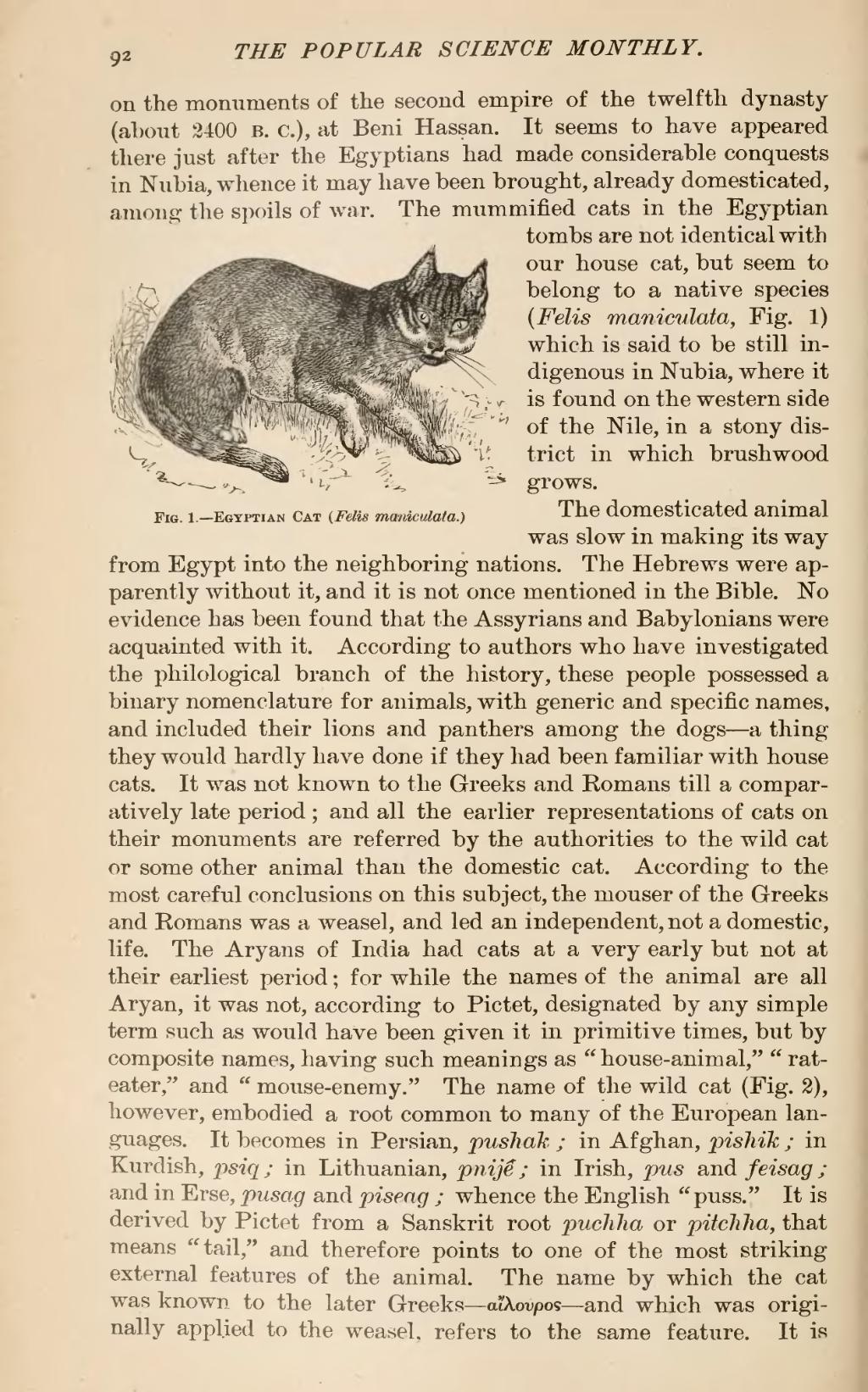on the monuments of the second empire of the twelfth dynasty (about 2400 c), at Beni Hassan. It seems to have appeared there just after the Egyptians had made considerable conquests in Nubia, whence it may have been brought, already domesticated, among the spoils of war. The mummified cats in the Egyptian  Fig. 1.—Egyptian Cat (Felis maniculata.) tombs are not identical with our house cat, but seem to belong to a native species (Felis maniculata, Fig. 1) which is said to be still indigenous in Nubia, where it is found on the western side of the Nile, in a stony district in which brushwood grows.
Fig. 1.—Egyptian Cat (Felis maniculata.) tombs are not identical with our house cat, but seem to belong to a native species (Felis maniculata, Fig. 1) which is said to be still indigenous in Nubia, where it is found on the western side of the Nile, in a stony district in which brushwood grows.
The domesticated animal was slow in making its way from Egypt into the neighboring nations. The Hebrews were apparently without it, and it is not once mentioned in the Bible. No evidence has been found that the Assyrians and Babylonians were acquainted with it. According to authors who have investigated the philological branch of the history, these people possessed a binary nomenclature for animals, with generic and specific names, and included their lions and panthers among the dogs—a thing they would hardly have done if they had been familiar with house cats. It was not known to the Greeks and Romans till a comparatively late period; and all the earlier representations of cats on their monuments are referred by the authorities to the wild cat or some other animal than the domestic cat. According to the most careful conclusions on this subject, the mouser of the Greeks and Romans was a weasel, and led an independent, not a domestic, life. The Aryans of India had cats at a very early but not at their earliest period; for while the names of the animal are all Aryan, it was not, according to Pictet, designated by any simple term such as would have been given it in primitive times, but by composite names, having such meanings as "house-animal," "rat-eater" and "mouse-enemy." The name of the wild cat (Fig. 2), however, embodied a root common to many of the European languages. It becomes in Persian, pushak; in Afghan, pishik; in Kurdish, psiq; in Lithuanian, pnijé; in Irish, pus and feisag; and in Erse, pusag and piseag; whence the English "puss." It is derived by Pictet from a Sanskrit root puchha or pitchha, that means "tail" and therefore points to one of the most striking external features of the animal. The name by which the cat was known to the later Greeks—αἾλονρος—and which was originally applied to the weasel, refers to the same feature. It is
